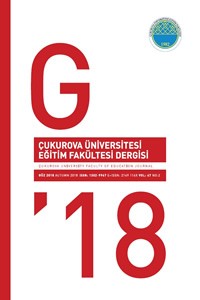Abstract
In the acquisition of first
language, among different word types “verbs” seems to be more challenging
because of both the cognitive and linguistic constraints that they require.
However, as Naigles & Hoff-Ginsberg (1998: 95) point out the effect of
syntactic diversity in addition to frequency and positional salience leads to
syntactic bootsrapping, which help children to acquire the meanings of new
verbs. Thus, as children start using verbs in different combinations, they
start to be aware of the abstract notions verbs denote and learn more new
verbs. within this framework children also acquire syntactic and semantic
properties of these verbs such as the number of arguments a verb requires and
whether the language in question allow argument ellipses.
The aim of this study is to
investigate how children acquire ditransitive verbs in Turkish. For this
purpose, spontaneous speech data collected from 10 children between the ages of
1;4 and 3;6 and their mothers has been analysed both quantitatively and
qualitatively. Six ditransitive verbs
have been chosen for analysis. The results show that among the six verbs
investigated, koy- (put) and ver- ‘give’ have been used more often
than the other verbs by the children from the younger group. In the older
group, in addition to the six verbs present in the vocabulary of younger
children, new verbs have also appeared.
Keywords
References
- Aksu-Koç, A. & Slobin, D. I. 1985. The acquisition of Turkish. In: Slobin, D.I. (ed.) The crosslinguistic study of language acquisition. Vol. 1. Hillsdale, NJ: Lawrence Erlbaum Associates. 839–878.
- Clancy, P. M. 2004. The discourse basis of constructions: Some evidence from Korean acquisition. In: Clark, E. V. (ed.) Proceedings of the 32nd Stanford Child Language Research Forum. 20–29. (online proceedings): http://cslipublications.stanford.edu/CLRF/2004/05-Clancy.pdf
- Clark, E. V. 2003. First language acquisition. Cambridge: Cambridge University Press.
- Du Bois, J.W. 1987. The discourse basis of ergativity. Language 63, 805–855.
- Ekmekçi, Ö. F. & Sofu, H. 1994. Acquisition of subject pronouns in Turkish. Eğitim Fakültesi Dergisi 10, 105–118.
- Göksel, A. & Kerslake, C. 2005. Turkish: A Comprehensive Grammar. London-New York: Routledge.
- Göksun, T. & Küntay, A. C. & Naigles, L. R. 2008. Turkish children use morphosyntactic bootstrapping in interpreting verb meaning. Journal of Child Language 35, 291–323.
- Gürcanlı, Ö. & Nakipoğlu, M. & Özyürek, A. 2007. Shared Information and Argument Omission in Turkish. In: Caunt-Nulton, H. & Kulatilake, S. & Woo, I. (eds.) Proceedings of the 31st annual Boston University Conference on Language Development. Somerville, MA: Cascadilla Press. 262–273.
- Ketrez, N. F. 1999. Early verbs and the acquisition of Turkish argument structure. Unpublished master thesis, Boğaziçi University, Istanbul.
- Naigles, L. R.& Hoff-Ginsberg, E. 1998. Why are some verbs learned before other verbs? Effects of input frequency and structure on children’s early verb use. Journal of Child Language 25, 95–120.
- Narasimhan, B. & Budwig, N. & Murty, L. 2005. Argument realization in Hindi caregiver-child discourse. Journal of Pragmatics 37, 461–495.
- Ninio, A. 1999. Pathbreaking verbs in syntactic development and the question of prototypical transitivity. Journal of Child Language 26, 619–653.
- Yavuz, H. & Balcı, A. & Turan, Ü. D. 2000. Turkish phonology, morphology and syntax. Eskişehir: Anadolu University.
Abstract
References
- Aksu-Koç, A. & Slobin, D. I. 1985. The acquisition of Turkish. In: Slobin, D.I. (ed.) The crosslinguistic study of language acquisition. Vol. 1. Hillsdale, NJ: Lawrence Erlbaum Associates. 839–878.
- Clancy, P. M. 2004. The discourse basis of constructions: Some evidence from Korean acquisition. In: Clark, E. V. (ed.) Proceedings of the 32nd Stanford Child Language Research Forum. 20–29. (online proceedings): http://cslipublications.stanford.edu/CLRF/2004/05-Clancy.pdf
- Clark, E. V. 2003. First language acquisition. Cambridge: Cambridge University Press.
- Du Bois, J.W. 1987. The discourse basis of ergativity. Language 63, 805–855.
- Ekmekçi, Ö. F. & Sofu, H. 1994. Acquisition of subject pronouns in Turkish. Eğitim Fakültesi Dergisi 10, 105–118.
- Göksel, A. & Kerslake, C. 2005. Turkish: A Comprehensive Grammar. London-New York: Routledge.
- Göksun, T. & Küntay, A. C. & Naigles, L. R. 2008. Turkish children use morphosyntactic bootstrapping in interpreting verb meaning. Journal of Child Language 35, 291–323.
- Gürcanlı, Ö. & Nakipoğlu, M. & Özyürek, A. 2007. Shared Information and Argument Omission in Turkish. In: Caunt-Nulton, H. & Kulatilake, S. & Woo, I. (eds.) Proceedings of the 31st annual Boston University Conference on Language Development. Somerville, MA: Cascadilla Press. 262–273.
- Ketrez, N. F. 1999. Early verbs and the acquisition of Turkish argument structure. Unpublished master thesis, Boğaziçi University, Istanbul.
- Naigles, L. R.& Hoff-Ginsberg, E. 1998. Why are some verbs learned before other verbs? Effects of input frequency and structure on children’s early verb use. Journal of Child Language 25, 95–120.
- Narasimhan, B. & Budwig, N. & Murty, L. 2005. Argument realization in Hindi caregiver-child discourse. Journal of Pragmatics 37, 461–495.
- Ninio, A. 1999. Pathbreaking verbs in syntactic development and the question of prototypical transitivity. Journal of Child Language 26, 619–653.
- Yavuz, H. & Balcı, A. & Turan, Ü. D. 2000. Turkish phonology, morphology and syntax. Eskişehir: Anadolu University.
Details
| Primary Language | English |
|---|---|
| Subjects | Studies on Education |
| Journal Section | Article |
| Authors | |
| Publication Date | October 1, 2018 |
| Submission Date | April 6, 2018 |
| Published in Issue | Year 2018 Volume: 47 Issue: 2 |
Copyright © 2011
Cukurova University Faculty of Education
All rights reserved


